(Or She-Hulk, Vol. 1, #99)
“Cause and Effect”
“99, I’ve waitin’ so long. Oh 99, where’d we go wrong? Oh 99…”
 Sorry. Pardon the fragment of lyrics from Toto. (“Who?” ask half the readers. “Dorothy’s dog, right?”) It’s just that I wanted to call attention to the fact that, 25 years after the first She-Hulk #1, we’ve finally reached issue #99. That’s an average of less than four issues per year! Okay, so it says issue #2 on the cover. Next issue it will say #100, promises our worthy assistant editor.
Sorry. Pardon the fragment of lyrics from Toto. (“Who?” ask half the readers. “Dorothy’s dog, right?”) It’s just that I wanted to call attention to the fact that, 25 years after the first She-Hulk #1, we’ve finally reached issue #99. That’s an average of less than four issues per year! Okay, so it says issue #2 on the cover. Next issue it will say #100, promises our worthy assistant editor.
We continue the recent She-Hulk tradition of beautiful covers, and this one even has something to do with the story inside! (Someone at Marvel musta missed that!) And, although She-Hulk is very likely wondering, “whose comic is this, anyway?” as Hawkeye literally upstages her in the picture, it’s nice to see Hawkeye on a cover pretty much anytime. Certainly, Greg Horn does justice to both our heroes.
We ended last issue with Jen and Pug entering his apartment at the end of the day, debating Jen’s professed intention to flout the rules of time travel and save the life of her dear friend Clint Barton, AKA the man called Hawkeye.
Detour #1: Unless it’s just me being very dense (always possible), last issue left us with the clear impression that Pug’s unrequited love for Jen throughout Volume three had become, well, requited during the hiatus between volumes. This belief is perpetuated as the argument over Jen’s “save Hawkeye” campaign continues between Jen and her boyfriend from opposite sides of the bathroom door. It is Pug’s apartment, after all… and he did start the argument. But he’s not the one finishing it. I won’t say more. Surprising (and disappointing) twist. We’re clearly building toward something here, and building nicely.
Now, back on track with Jen’s time travel court case, for which the jury, selected from the recent past, includes Clint Barton. Jen plans to let him know that he’s about to die. She tries sign language during her cross-examination of a witness. This is a nice reminder that Hawk should know sign language, being partially deaf and all. Sadly, he’s also dense, like me, and doesn’t pick up on Jen’s message. So, later, like Marty McFly, Jen writes Clint a letter, which she plans to hand to him at some point during the trial.
I think the most enjoyable part of this story, for me, is Jen’s refreshing disregard for the rules when Clint’s life is on the line. This is atypical in modern comics, where death is slightly more inevitable on any given day than breakfast. This, we are constantly reminded, is part of being alive, and should be viewed with detachment yada yada yada blah blah blah…
I’m glad that our Heroine doesn’t agree. I hope other readers are also tired of hearing that death should be put in perspective. Death should be told to take a flying leap. Death is the enemy. And comic writers need to stop giving aid and comfort to it! (End of rant. Swallowing my blood pressure meds, my prozac… okay… and we’re back.)
For those curious just where in the timestream this Hawkeye hails from, it’s confirmed that this is Hawk less than one year before his death. So, if Jen happens to be successful in saving him, he won’t have missed much. Hell, the only thing he’s likely to have forgotten would be Chuck Austen’s run on the Avengers, and that’s a good thing. He and Hank and Jan can all be friends again.
The story arc is clearly not over with this issue, and I’ll not throw out any more spoilers. Jen’s court case is resolved, though, with a very nice twist, and some nice slamming of petty lawyers (as opposed to good ones like Jen) in the personification of the prosecuting attorney at the end.
We’re building up to issue 100, where the Time Variance Authority has promised to erase Jen from history. (Not sure how that could be in any way construed to be within safe guidelines for protecting the course of history, but these are bureaucrats, so…) This is a result of her attempt to divulge knowledge of his imminent demise to Hawkeye. I won’t say whether she succeeded in passing the info or saving Hawkeye, mostly ’cause we don’t really know yet. Time — and issue #100 — will most likely tell.
The big centennial issue promises 40 pages of new material, plus reprints of issues #1 of both Volumes 1 and 2. Pretty cool, even if you already own the reprinted issues. Reprints keep comics history alive!
Until then, keep your gamma changer plugged in!
She-Hulk Vol. 4, # 2
“Cause and Effect”
Writer: Dan Slott
Penciller: Juan Bobillo
Inker: Marcello Sosa
Letterer: Dave Sharpe
Colorist: Dave Kemp
Editor: Tom Brevoort
Ass’t Editors: Schmidt, Lazer & Sitterson
Editor in Chief: Joe Quesada
Publisher: Dan Buckley
Cover: Greg Horn

 I guess the only thing cooler than being interviewed in the pages of one of your favorite magazines is being interviewed in one of your favorite magazines and having the cover art turn out to be this amazing image of Dr. Strange and Clea by Arthur Adams. My friend and sometimes-editor
I guess the only thing cooler than being interviewed in the pages of one of your favorite magazines is being interviewed in one of your favorite magazines and having the cover art turn out to be this amazing image of Dr. Strange and Clea by Arthur Adams. My friend and sometimes-editor 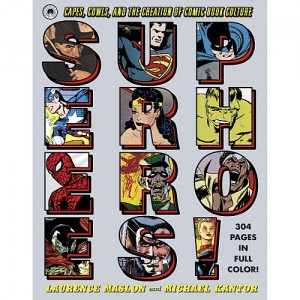
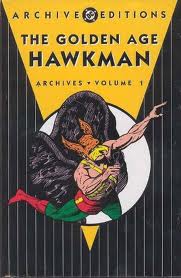
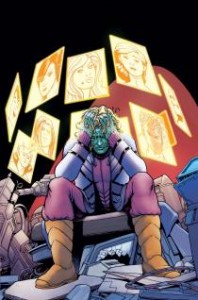
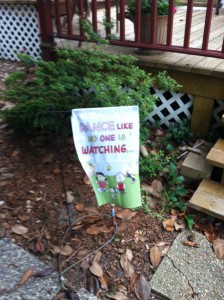
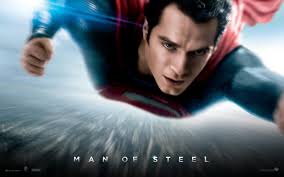
 I’ve made no secret of the fact that I’m not much of a fan of modern comics. I don’t like the pace of the storytelling, where everything is so obviously plotted to fill a six-or-twelve-issue trade. Often nothing significant happens in a single month’s issue, and even more often, the thirty-day wait between issues in which the plotting is more suited to a daily soap opera causes me to forget what happened before, and I lose the thread of the story entirely. This is intentional, I’m sure. Comics publishers want buyers to pick up the individual issues to stuff in bags and collect, and save reading for the trade paper edition, which they think we’ll also buy. Stupidly, a lot of us do buy each issue and the collected edition that comes out within days after the final issue of a story arc. Indeed, sometimes the trade beats the final issue to the stands.
I’ve made no secret of the fact that I’m not much of a fan of modern comics. I don’t like the pace of the storytelling, where everything is so obviously plotted to fill a six-or-twelve-issue trade. Often nothing significant happens in a single month’s issue, and even more often, the thirty-day wait between issues in which the plotting is more suited to a daily soap opera causes me to forget what happened before, and I lose the thread of the story entirely. This is intentional, I’m sure. Comics publishers want buyers to pick up the individual issues to stuff in bags and collect, and save reading for the trade paper edition, which they think we’ll also buy. Stupidly, a lot of us do buy each issue and the collected edition that comes out within days after the final issue of a story arc. Indeed, sometimes the trade beats the final issue to the stands.